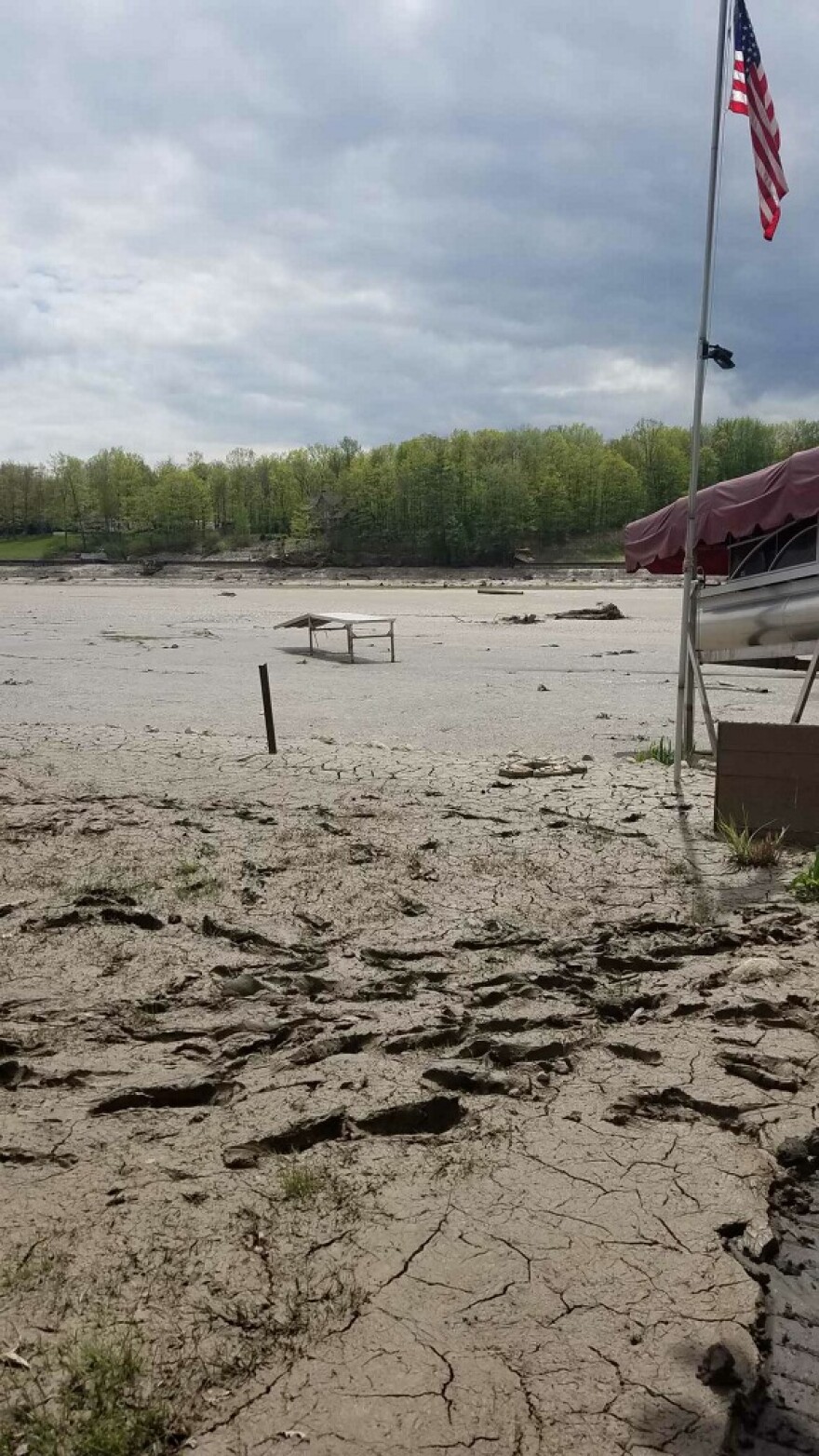What used to be a lake in front of Pete Deliso’s house in Edenville Township is now a barren expanse of dirt and brush.
“When the wind blows, it looks like the Sahara Desert,” Deliso said.Until last May, Sanford Lake came right up to his backyard. Dams upstream from Deliso’s house on the Tittabawassee River controlled the water coming into the lake, and the Sanford Dam controlled the water leaving it.
But under heavy rains, the upstream dams failed. Water flooded into Sanford Lake and into the homes of Deliso, his neighbors, and thousands of other people in communities along the course of the river. Then, the downstream dam failed, and the lakes emptied.
Now, Deliso has to decide whether to stay here and accept the drastically reduced property value and quality of life that comes from living on an arid expanse of former lake, or sell his house for whatever he can get, and move away.
There is a plan to re-fill this lake. All four of the mid-Michigan dams that broke after heavy rains last year are slated for reconstruction, and they’ll each hold back a lake along the Tittabawassee river.
But the process will take years. Deliso is not sure if he and his wife will live to enjoy the lakes again.

They’re in their 70s, he said. “I don’t know how many more years I have left. … I just had major surgery last year, which I’m still not back from. My wife is not well.”
And there’s a big price tag for rebuilding the lake. Tim Holsworth is responsible for raising some of the money that will go toward Sanford Lake.
He’s aiming for $2 million a year, from a community of only a few thousand people.
“I didn’t say we had a high probability of success, but yes, that is the task,” Holsworth said.
But even that amount is just a tiny portion of the total cost of rebuilding. The Four Lakes Task Force, a quasi-governmental agency that took ownership of the dams after they failed, says getting the lakes back will take upwards of $300 million.
Donations obviously aren’t going to raise enough money, Holsworth said. The agency needs a way to compel payment, but it’s not an easy sell.

“Now we’ve got the most controversial issue in this entire project,” Holsworth said.
The issue is a special assessment district -- a geographic area near the lakes in which property owners would pay for the dams’ reconstruction.
But the property owners aren’t responsible for the dams collapsing. They’re not the reason the lakes are gone.
State and federal investigators blame the dams’ former owner, Boyce Hydro, for ignoring safety warnings from regulators before the structures failed. Now, that owner has declared bankruptcy.
So Holsworth, who lives in a house that would be included in the district, said the fee on property owners is the best shot they have at getting the lakes back. It’s not fair, he said, but he’s ready to pay. The expected price, $1,600 a year, “is a bargain,” compared to the cost to the community of permanently depressed property values.
“Property taxes pay for the schools, for the parks, for the local government -- for everything we’re proud of here,” Holsworth said. “If the lakes don’t come back, that tax base is gone.”
A survey by Public Sector Consultants, commissioned earlier this month by the Four Lakes Task Force, found more than 60% of residents in the special assessment district would be willing to pay at least $500 a year to fund the dams’ reconstruction. But the survey report also indicated that a question about payment “seemed to confuse many people,” and less than half of the residents contacted to participate in the poll responded.
Deliso said he’s philosophically opposed to the assessment district, but he feels stuck.

He can’t sell his house, because its value has dropped so much. And he doesn’t want to leave even if he could.
Deliso said the flood built community. He’s grown close with neighbors he barely knew before, and he’s holding onto hope that even if he has to pay for it, the dam will be rebuilt, and the lake will come back for good.
To make that happen, a key part of the construction plans this time around is safety.
Dave Rothman, the Vice President of the Four Lakes Task Force, said they’re working with an array of experts to make sure the dams are rebuilt right.
“There is a gaggle of consultants working for us,” Rothman said. “We’ve got two companies consulting with us on engineering matters, plus a full-time engineering firm working for us. We’ve got aquatic biologists consulting with us. We’ve got legal experts consulting with us. We’ve got financial experts.”
Rothman said the task force is also planning appeals to the federal government for grants, but there’s a lot of work that needs to happen first. “You can’t go into a legislator’s office without a plan,” he said.
So, they’re writing up a long, detailed report.
“If you’ve got a report that totals 1,000 pages, and you can print it out and drop about 30 pounds of paper in front of somebody in the federal government and say ‘we need help and here’s why’ … I think we’ve got a pretty good chance of getting significant help from our people in Washington,” Rothman said.
The goal is to secure federal funding to reduce the burden on property owners, Rothman said, so that the lakes will be refilled, and he and his neighbors can be out boating on them, by 2025.






